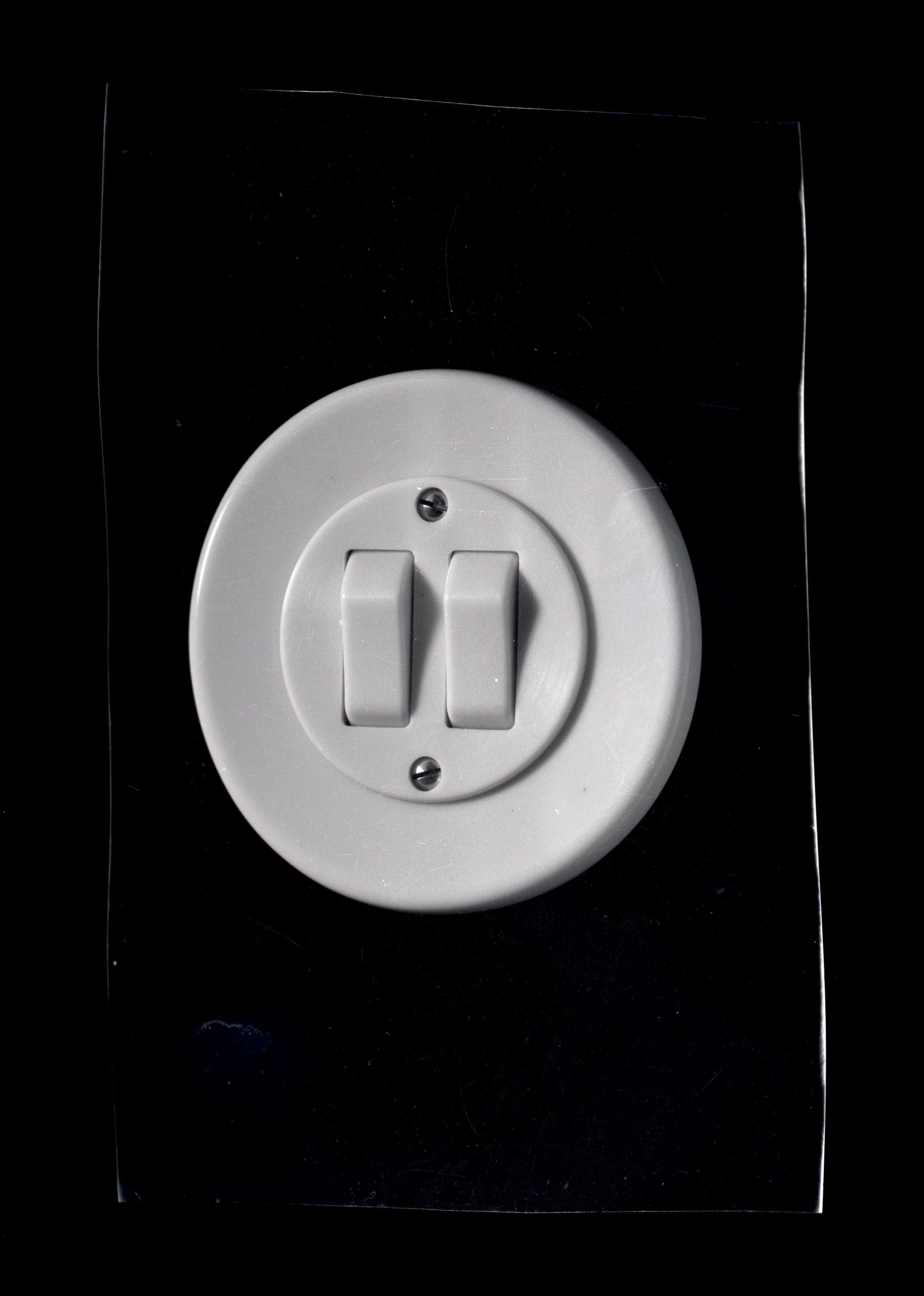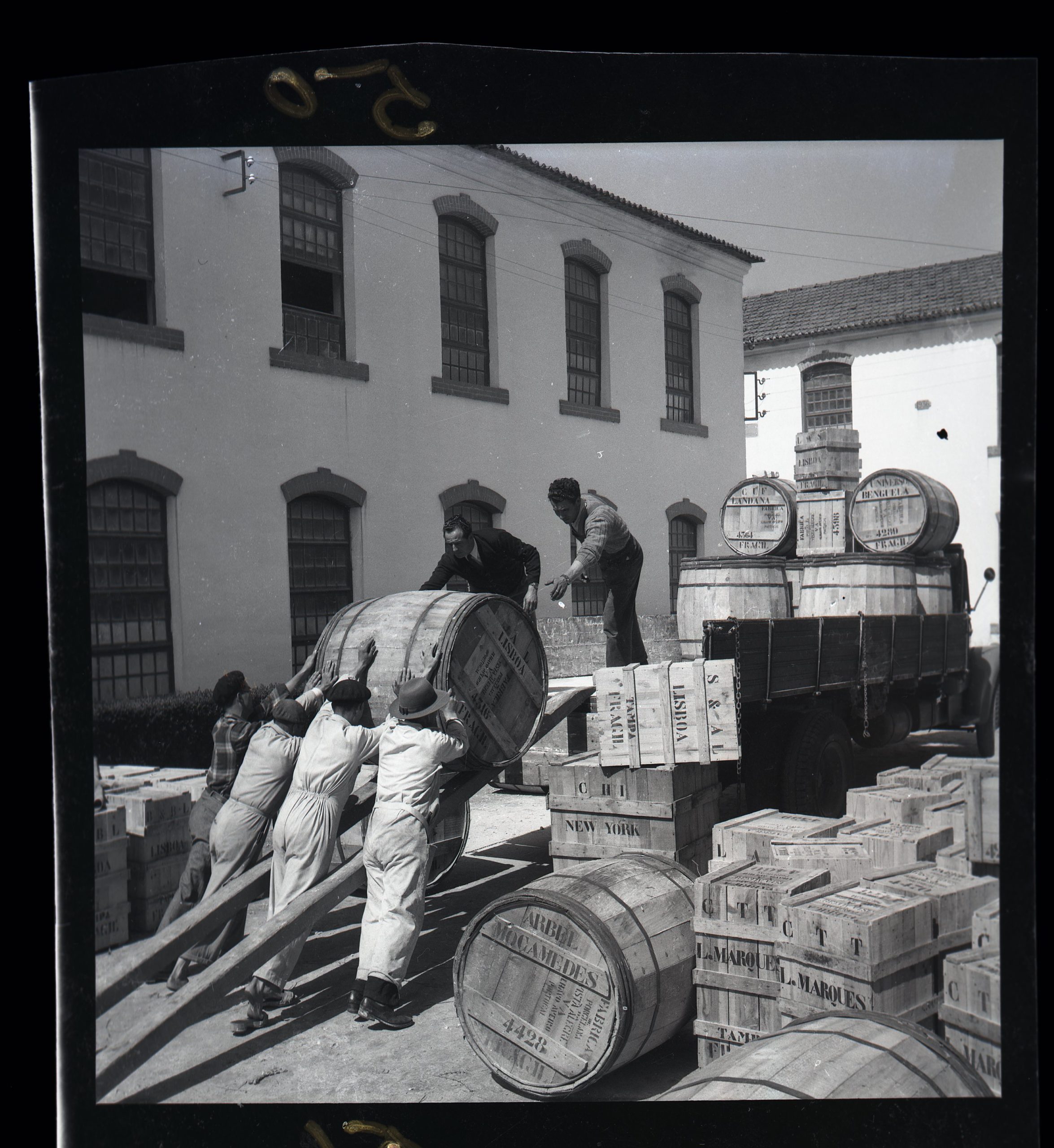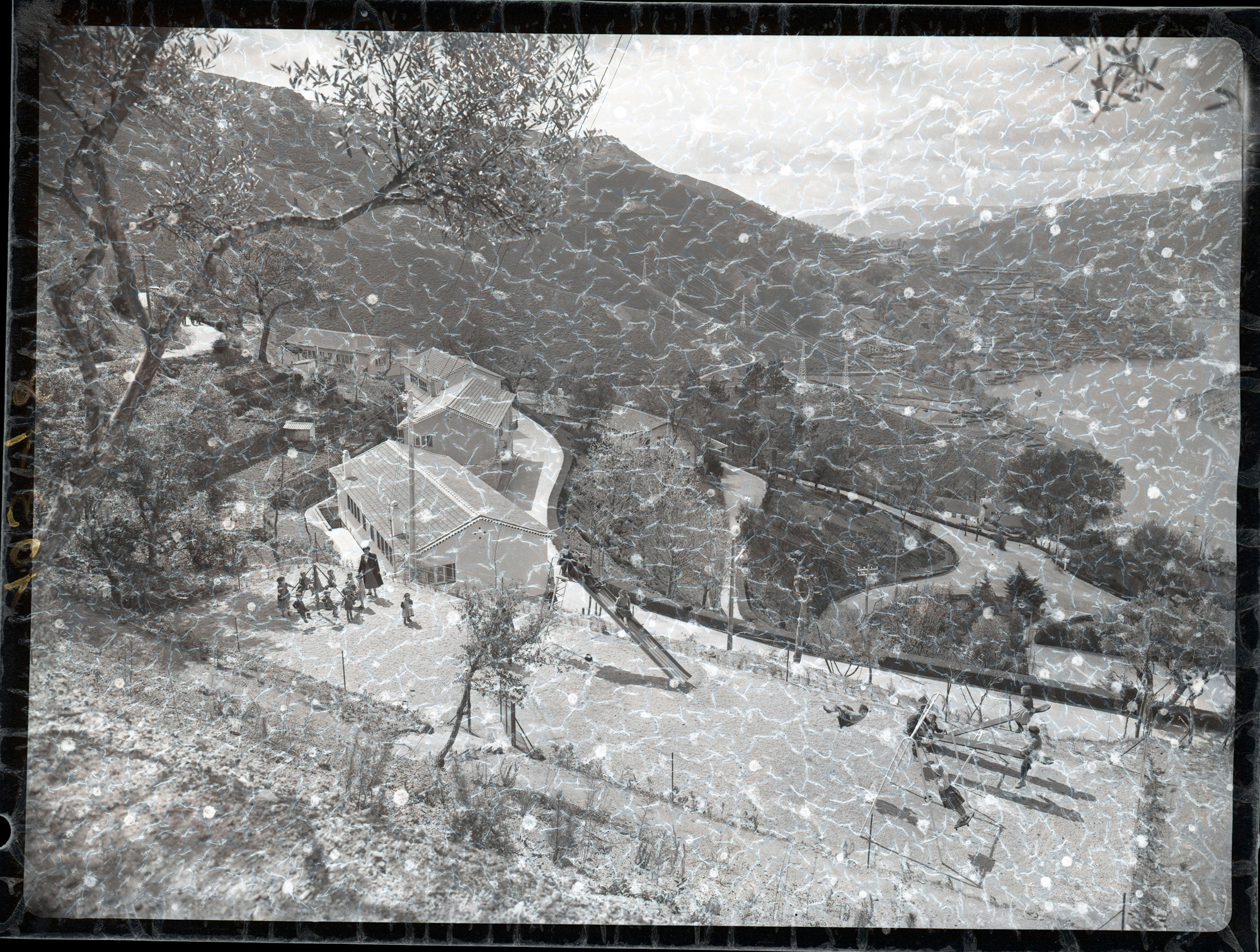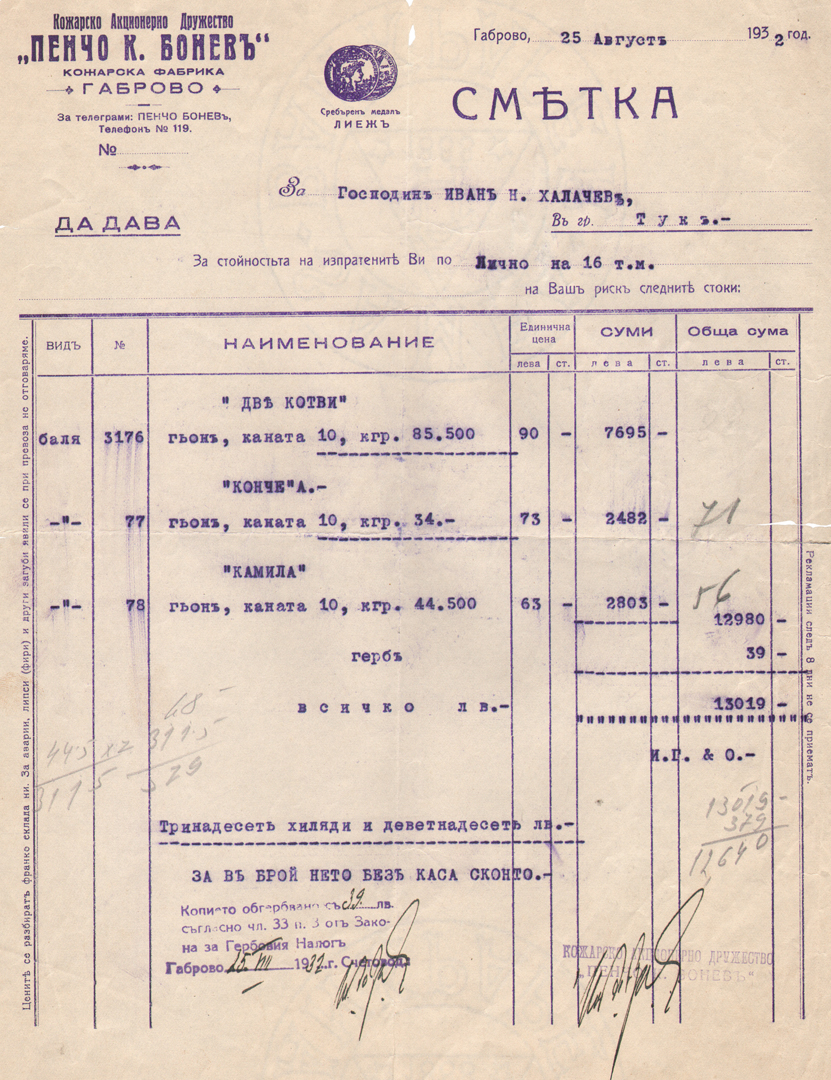Switching on/off is one of the most basic and essential functions of button switches. Today, we can replace that button with palms or a voice command. Will we gradually stop touching machines and replace all buttons with digital interfaces?
84. Electric switch buttons from Electro-Cerâmica Company, dedicated to the manufacture of electrotechnical ceramics. 1947-1997. Teófilo Rego Archive, Casa da Imagem – Manuel Leão Foundation, Vila Nova de Gaia, Portugal.
While industrial qualified work was often seen as pertaining to men, women occupied a central role in the industrial revolutions. Should a diverse working environment and representativeness be considered a fundamental right/principle?
86. Locksmiths in the workshop for the production of callipers. Period of State Socialism, 1944-1989. Interactive Museum of Industry, Gabrovo, Bulgaria.
The implantation of industrial settlements near rivers and forests for the exploration of its resources increased the occupation of rural areas and natural lands creating new urban centres which, in some cases, lacked nature protection laws.
In the future, how will the growing impact concerns with sustainability and the footprints of new industrial developments impacting on natural lands?
88. Gabrovo from a bird’s eye view. Interactive Museum of Industry, Gabrovo.
Wooden casks and barrels became important shipping containers for industries because they facilitated trade and logistical activities.
How did the increased changes in industrial technologies impact on the production and use of wooden casks today? Have you heard of Euro-pallets?
90. Workers loading a vehicle with products from the Porcelain Factory Vista Alegre, in Ílhavo. 1947-1997. Teófilo Rego Archive, Casa da Imagem – Manuel Leão Foundation, Vila Nova de Gaia, Portugal.
The disassembly of an industrial product makes us think of the different networks that are activated so to bring together the bits and pieces that compose the industrial system. If we dismantle a computer produced today, would its components have the same network coverage of the product shown in the image?
92. Various components of an electrical device. Grundig. 1965-1997. Teófilo Rego Archive, Casa da Imagem – Manuel Leão Foundation, Vila Nova de Gaia, Portugal.
The photographer records the factory installations, the machines, the products, the workers, the raw material, the visits and inaugurations. While photography allows the industry to be documented, it also gives it visibility and status. Which products will confer status to their users 50 years from now? Will they still be cars?
94. Van CUF (Manufacturing Union Company). 1947-1997. Teófilo Rego Archive, Casa da Imagem – Manuel Leão Foundation, Vila Nova de Gaia, Portugal.
One of the bases for the EU framework for health and safety is related to workers rights to have a work environment adapted to their professional needs, promoting their long participation in the labour market. Different cultural backgrounds are related to several cultural manifestations and dailly habits related to food, religion and dressing codes. Do EU workers, from different cultural backgrounds, have their personal and professional needs guaranteed by the work environment?
96. Sanctification of a factory. 1936. Interactive Museum of Industry, Gabrovo, Bulgaria.
Discrimination in industrial settings might take many forms, from access to specific functions to different pay. Can discrimination be justified in some circumstances regarding industrial work?
98. Spinning and twisting in the cotton textile factory. Period of State Socialism, 1944-1989. Interactive Museum of Industry, Gabrovo, Bulgaria.
The entrance of women to the labour market allowed them to contribute to the family budget. What other consequences do you think this change brought?
101. Canteen of a wool textile factory. Ca. 1970. Period of State Socialism, 1944-1989. Interactive Museum of Industry, Gabrovo, Bulgaria.
For many years, the economic power and the family descent were two essential factors for a family to make its business grow. What are the factors that today make companies successful?
103. The owner of the first privately owned water power plant with his family in France. Early XX century. Interactive Museum of Industry, Gabrovo, Bulgaria.
In a world increasingly connected and anchored in an idea of ideal productivity levels, and a pressure towards more competitiveness in the industrial sector, are laws important to ensure rest and time off work?
105. Welders. Period of State Socialism, 1944-1989. Interactive Museum of Industry, Gabrovo, Bulgaria.
Proto-industry memories are part of industrial heritage. The craft and domestic production of manufactured goods was fundamental for the Industrial Revolution to happen. Today, some consumers seem to prefer manufactured products to industrialised ones. In your town, is there a pre-industrial workshop? What does it produce?
107. Old machinery used for wool braid spinning. End XIX century. Interactive Museum of Industry, Gabrovo, Bulgaria.
Western children do not work in industry but have become major consumers of industrial products such as films, computers, smartphones, games, etc. We know that many of these products are addictive and that they prevent children from playing freely, preventing them from developing the social and emotional skills that are fundamental to their growth. So, does the progress of industry collide, once again, with the child’s right to play?
108. School, HICA – Cávado hydroelectric plant. 1945-1964. Teófilo Rego Archive, Casa da Imagem – Manuel Leão Foundation, Vila Nova de Gaia, Portugal.
At the beginning of the 20th century, many women joined the factories at a very young age, being uneducated in formal work protocols, assuming tasks which were monotonous and without responsibility. Could today women be tutors and educate other people on how do machines work?
85. Spinning workshop. Period of State Socialism, 1944-1989. Interactive Museum of Industry, Gabrovo, Bulgaria.
A factory growing along a valley is usually exploring the proximity to the power of the river waters as hydro energy would propel the beginnings of industrialization. Which energy sources may today be used to change the old construction along rivers?
87. View of the second (middle) and third (right) factories in Gabrovo. Wool textile.1884-7. Interactive Museum of Industry, Gabrovo.
Materials are collected from natural environments to be transformed into products, whether final or intermediary. Would you consider a fabric a raw material, or a product?
89. Água Longa Velvet Factory, Santo Tirso. 1947-1985. Teófilo Rego Archive, Casa da Imagem – Manuel Leão Foundation, Vila Nova de Gaia, Portugal.
Industrial settlements were represented as an extensive unitarian land occupation with different building components responsible for the stages of a production chain.
How would we represent the land occupation of a complex international industry system nowadays?
91. Drawing of the Portuguese Tannery Factory. 1947-1997. Teófilo Rego Archive, Casa da Imagem – Manuel Leão Foundation, Vila Nova de Gaia, Portugal.
Hand trucks, mechanical lifts and pallets are equipment used on one of the most critical phases of a production chain: the loading and unloading of products and goods.
Which is the role of transportation in the production chain?
93. Period of State Socialism, 1944-1989. Interactive Museum of Industry, Gabrovo, Bulgaria.
The workshop was a mode of production closer to craftsmanship than to the factories transformed by the new digital revolution. What would robotization mean to this factory?
95. Hoist assembly. Period of State Socialism, 1944-1989. Interactive Museum of Industry, Gabrovo, Bulgaria.
Until today, many industrial sectors are homogenic and lack diversity. What could be the benefits of a more diverse industrial landscape?
97. Spinning department of one of the knitwear factories with workers.1939. Interactive Museum of Industry, Gabrovo, Bulgaria.
Women have traditionally earned less than men for the same industrial tasks. Although this has been increasingly tackled by legislative steps, unequal pay remains, what can be the consequences for the industrial sector?
99. Bill for a client that purchased a few different leather articles. 1932. Interactive Museum of Industry, Gabrovo, Bulgaria.
Many companies consider their staff to be their asset. Therefore, training and working conditions are some of the aspects that define a company and it can also be through the identity, joy and pride in the company brands. What kind of criteria do workers use to choose a corporation?
100. Workers, EFACEC – Electrical Machinery Manufacturing Company. 1948-1997. Teófilo Rego Archive, Casa da Imagem – Manuel Leão Foundation, Vila Nova de Gaia, Portugal.
For many years housing was built near industrial units as a way to have workers within walking distance of the workplace. What are industrial cities like today? What are the differences between industrial cities in Europe and India?
102. CUF (Manufacturing Union Company). 1947-1997. Teófilo Rego Archive, Casa da Imagem – Manuel Leão Foundation, Vila Nova de Gaia, Portugal.
Some industries develop their activities far from the urban centres. Addressing some of their workers’ needs, factory owners develop some essential facilities near their industrial complexes, namely schools. Was this a good system?
104. School, HICA – Cávado hydroelectric plant. 1945-1964. Teófilo Rego Archive, Casa da Imagem – Manuel Leão Foundation, Vila Nova de Gaia, Portugal.
Many of the current professions do not require their workers to share the same physical space or even know each other in order to carry out their work. So how can these workers develop a collective consciousness and join together to play an active role in the organisation of work? Is it crucial for workers to come together?
106. Opening of a hoist factory. Later to become the biggest producer of hoists in the world. April, 1963, Period of State Socialism. Interactive Museum of Industry, Gabrovo, Bulgaria.
Many industrial settlements offered their workers spaces for socializing as well as fomented the factory theatre group, carnival or other kind of leisure activity that would unite workers in their out of work time as well as spread the company name on a cultural level. These kinds of opportunities allowed to build a community of workers at the same time as allowed, the factory owners, to controle the all day of a worker.
What kind of cultural activities do industries promote, now a days?
109. Dance team from the biggest wool textile factory on the Balkan peninsula during a hollyday. Interactive Museum of Industry, Gabrovo, Bulgaria.
Would the idea of leisure, as opposed to work, cease to exist if everyone stopped working? Would the words rest and holidays cease to exist?
110. Theatre play, TEP (Experimental Theatre of Oporto) for EFACEC – Electrical Machinery Manufacturing Company. 1948-1997. Teófilo Rego Archive, Casa da Imagem – Manuel Leão Foundation, Vila Nova de Gaia, Portugal.


























